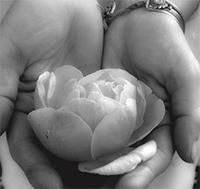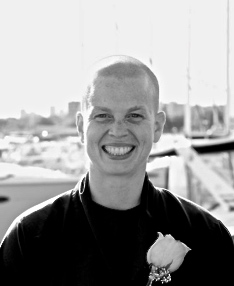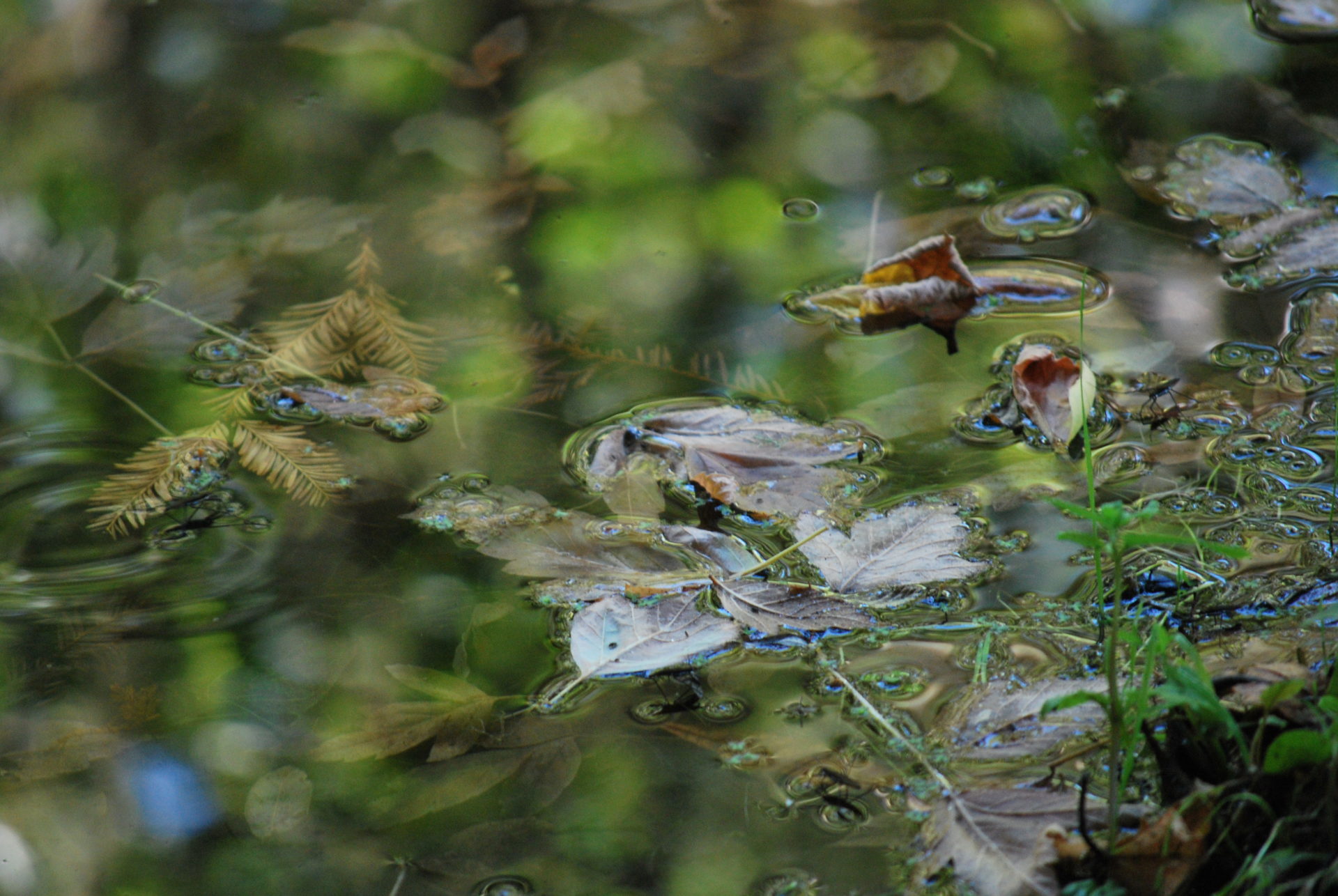By Sister Hai An (Sister Ocean)

I recently had the opportunity to move to Blue Cliff Monastery in New York from Plum Village. The transition was filled with joy in getting to know a new community and being back in North America. It was also filled with sorrow over the tragedies that marked this past year in America, especially the murders of so many African Americans. The Twelfth Mindfulness Training asks us to “cultivate nonviolence,
By Sister Hai An (Sister Ocean)

I recently had the opportunity to move to Blue Cliff Monastery in New York from Plum Village. The transition was filled with joy in getting to know a new community and being back in North America. It was also filled with sorrow over the tragedies that marked this past year in America, especially the murders of so many African Americans. The Twelfth Mindfulness Training asks us to “cultivate nonviolence, compassion and the insight of interbeing in our daily lives and promote peace education, mindful mediation, and reconciliation within families, communities, ethnic and religious groups, nations, and in the world.” So I’ve been asking myself, “How can I cultivate nonviolence, compassion, and the insight of interbeing, here and now?”
As a white person, I’ve particularly been contemplating what it takes for people who do not suffer acutely from racism and police brutality to move from ignorance, apathy, and denial to compassionate action. Thay’s teaching on true love and the durian fruit has brought me a lot of clarity. Thay says that if you love someone and want to make them happy but you keep giving them what they don’t want, it’s not true love. Thay doesn’t like durian fruit so if you were to give Thay a durian, he would suffer. He says, “Without understanding, your love is not true love.” 1 Many people think that racism comes from hatred and therefore the antidote must be love. But if we don’t know how to love, our well-intentioned actions miss the mark and become like durians offered to Thay. I see in myself and in those around me that when we don’t understand ourselves and each other, when we can’t handle a person’s or a community’s pain because we are too numb to our own pain or overwhelmed by it, and if we are too busy to feel anything at all, true love is impossible.
Looking deeply into the nature of racism we can see that it is based in separation and fear, which can be expressed as hatred but can also be expressed without hatred, as in the case of institutional, systemic racism. It seems to me that racism is a reflection of our collective delusion of separation, whether that delusion is expressed as a superior self, an inferior self, or an equal self. Therefore our path of understanding and love must address our sense of being a separate self.
NOT TURNING AWAY FROM RACISM
At a recent retreat, a white woman told a story that helped me to see another “durian” in my life. One day as she walked toward the entrance of a bank, a tall, black man in shabby clothing walked up behind her. She thought, “Don’t be alone with a black man. He might attack you.” Then, because of her mindfulness practice, she was quickly able to recognize that the thought had come from her mother. It was not her own thought and therefore she didn’t need to listen to it. She went into the bank followed by the man, got her money, and left. Back on the street, the man ran over to her and said, “Excuse me! You forgot your ATM card!” He handed it to her and went on his way.
Her story beautifully demonstrated the importance of not believing one’s perceptions. It also gave a clear example of how to be courageous in sharing one’s actual experience, not just what sounds “right”—for racism is part of everyone’s life, not just the lives of people of color. What made the deepest impression on me, however, was my own reaction while listening to the story. My first thought was, “Oh no! I hope she doesn’t tell a racist story!” There was a woman of color in our otherwise white discussion group and I worried about the story alienating her. Looking deeper, I saw that this summarized my main approach to practicing anti-racism: avoid saying anything offensive. In the past this had seemed skillful, but on that day I saw that it was based in fear, not love. I saw that I was trying to hide racially biased thoughts rather than look into them, for I was rejecting them. Through mindfulness practice, I’ve learned to accept and embrace many difficult emotions and situations, but embracing racism seemed beyond the limits of my practice. I thought that this rejection was necessary. The ATM story showed me that my love for the world and aspiration to help the world to heal from racism, channeled through fear, was yet another durian.
Practicing mindfulness, we learn that we contain the seeds of everything inside of us: of racism and discrimination as well as courage and healing. We know that we need to train ourselves to transform the negative habits we have received from our families and society. How could this not include racism? The practice shows us that while transformation requires stepping into pain, it doesn’t end there. Great joy and freedom can come from the transformation of suffering. After hearing the story in our discussion group, I felt the pain of the fear and separation I had been secretly carrying. Once it had been felt and understood, the fear let go by itself.
Now I see more clearly that when I am stuck in my pain, even well-intentioned pain, then the pain of “the other” always seems lesser—even if my pain is about standing in a long line at the post office while “the other’s” pain is from experiencing a lifetime of violence and systemic oppression. It is human instinct to consider one’s own needs before those of others. However, awareness of instincts allows us to begin to change those that don’t support our bodhisattva aspiration to serve all beings. This is the gift of mindfulness.
THE WARM EMBRACE OF KINSHIP
Dr. Martin Luther King Jr. said, “Only a refusal to hate or kill can put an end to the chain of violence in the world and lead us toward a community where men can live together without fear. Our goal is to create a beloved community and this will require a qualitative change in our souls as well as a quantitative change in our lives.” 2 In this light, I am learning to “refuse to hate” the parts of myself that I deem unacceptable, to move beyond hatred and ignorance to create the beloved community.
As Thay says, “To be is to inter-be.” As inter-beings, there is no “other” to serve, to pity, or to avoid. If I’m hurting a part of my interdependent self, then I naturally want to do all that I can to soothe that pain. In describing his work with former gang members in Los Angeles, Jesuit priest Father Greg Boyle says, “We seek to create loving communities of kinship precisely to counteract mounting lovelessness, racism and the cultural disparagement that keeps us apart.” 3 He calls this “our common call to delight in one another.” 4 To delight in one another, I must delight in my whole self. Then there is no room left for fear, and all beings become my kin.
At the end of our last retreat for people of color and allies in anti-oppression, I made the commitment to welcome my mistakes, to allow myself to be wrong, and to embrace the racism within me as part of the practice to manifest a “qualitative change in our souls as well as a quantitative change in our lives.” Movements like #BlackLivesMatter 5 and websites like buddhistsforracialjustice.org offer many opportunities to educate ourselves and to come together in compassionate action. Yet I know from my own activist past that without a “soul change,” it’s too easy for our efforts to end racism and and all forms of oppression to simply perpetuate them.
Thanks to this contemplation, I feel more courageous in the practice of true love. I know that I will keep offering durians from time to time, and it’s okay because I’ve also committed to delighting in the process of learning. Moving through disconnection and discomfort into the warm embrace of kinship is surely worth the effort. Learning to accept, embrace, and talk about racial bias is a small but concrete way to practice the Fourteen Mindfulness Trainings and to thereby fulfill the dream of Dr. Martin Luther King Jr. and Thay to create a beloved community of true love.
1 Thich Nhat Hanh, Teachings on Love (Berkeley, CA: Parallax Press, 2007), chap. 1.
2 Dr. Martin Luther King Jr., “Nonviolence: The Only Road to Freedom,” May 4, 1966. Retrieved from: http://teachingamericanhistory.org/library/document/nonviolence-the-only-road-to-freedom/
3 Gregory Boyle, Tattoos on the Heart: The Power of Boundless Compassion (New York: Free Press, 2010), chap. 6.
4 Tattoos on the Heart, preface.
5 Rooted in the experiences of black people in the United States who actively resist their dehumanization, #BlackLivesMatter is a call to action and a response to the virulent anti-black racism that permeates US society (blacklivesmatter.com).

Sister Ocean (Chan Trang Hai An) was born in Canada, ordained in Plum Village in 2012, and now lives at Blue Cliff Monastery. In her free time you can find her singing, writing, getting a Christmas choir going, or baking a pumpkin pie.

